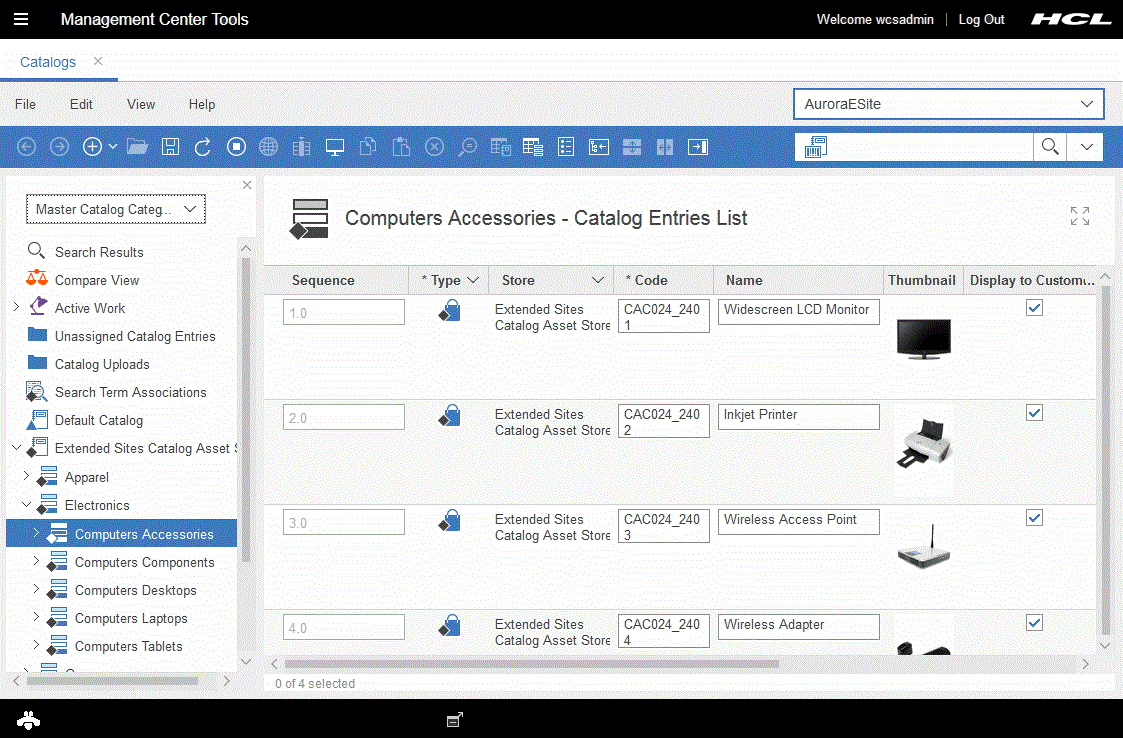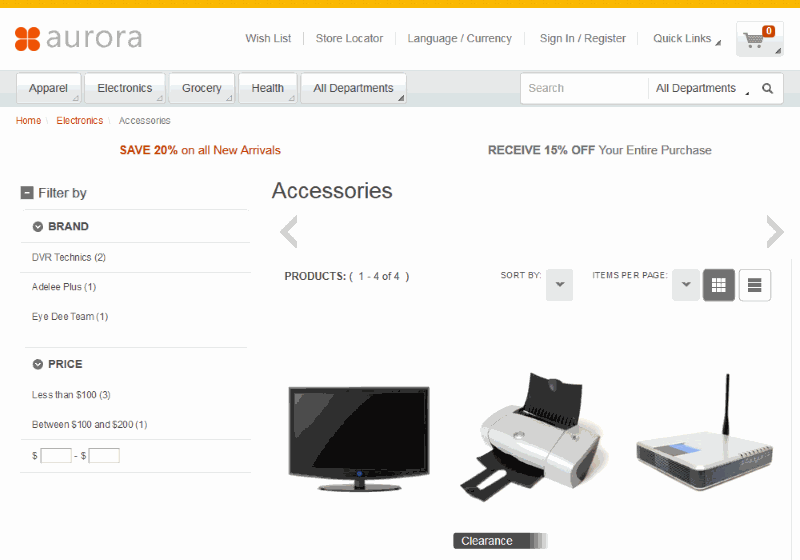Categories
The Master Catalog view displays an hierarchical structure of categories in the store. For example, a catalog can have three top categories such as Furniture, Kitchenware, and Tableware. Most categories also include subcategories. For instance the Furniture category contains Desk Lamps, Table Lamps, and Desks subcategories. The Unassigned Catalog Entries folder contains all the catalog entries that are not assigned to a parent category in the Master Catalog. Use this folder for work in progress. The contents of the Unassigned Catalog Entries folder does not display in the store.


From the preceding diagrams, you can see that the categories are structured the same way in the Management Center as it is on the storefront.
You can create a version of a category. A category version is a snapshot of the category at a particular time, the snapshot includes the category name and image. When you create a version of a category, the version is stored in a repository for future use. Subsequent changes you make to the category do not affect the copy of the version that you created.
You can manage attribute dictionary faceted navigation attributes in categories to control how facets are displayed at a category level. Managing faceted navigation attributes in categories enables changing the attributes display sequence, and assigning attributes to display or hide in category pages. Managing faceted navigation attributes in categories ensures that customers see only the appropriate facets. That is, those facets that are most effective for targeting and comparing similar products within a category.